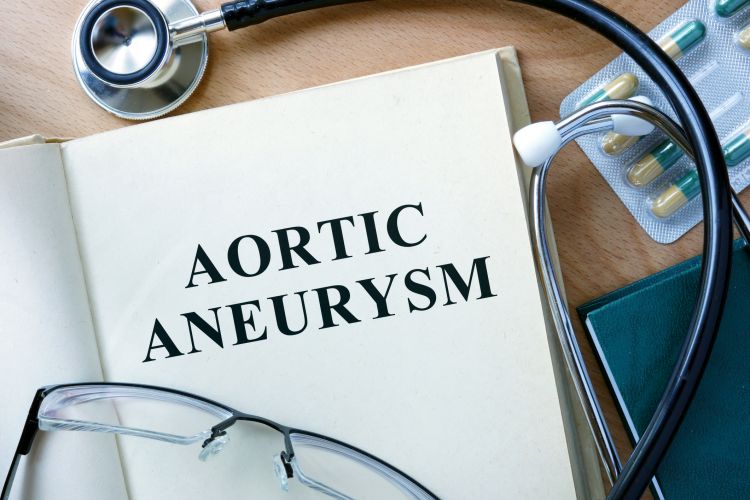
Aortic aneurysms often occur without any apparent warning signs. Left untreated, they may rupture causing life-threatening consequences. While small aneurysms aren’t necessarily dangerous at onset, the underlying cause of an aneurysm may indicate a more serious health issue in the body.
- What is an aortic aneurysm?
An aortic aneurysm occurs when the wall of the aorta, the main artery in the body, swells or weakens. This creates a bulge in the aorta that’s susceptible to rupture, depending on the size. Smaller aneurysms are often manageable and rarely burst, but a larger aneurysm will likely rupture if it goes undetected and untreated. If an aortic aneurysm ruptures, bleeding may lead to problems such as heart attack, kidney damage, stroke and death.
- What are the types of aortic aneurysms?
There are two categories of aortic aneurysms based on location.
A thoracic aortic aneurysm occurs in the chest. Thoracic aortic aneurysms are often linked to genetics, which can be helpful in monitoring this condition. Other causes may include high blood pressure, infection, atherosclerosis, high cholesterol and traumatic injury. An X-ray, echocardiogram, CT scan or ultrasound can usually identify a thoracic aneurysm.
An abdominal aortic aneurysm occurs in the abdomen. Less is known about the exact cause of abdominal aortic aneurysms, but linked risks include high blood pressure, genetic predisposition, hardening of the arteries and smoking. There are few symptoms experienced with an abdominal aneurysm before it ruptures.
Both types of aortic aneurysms are often accidentally diagnosed during routine exams or while seeking treatment for an unassociated ailment.
- Who is most at risk of having one?
Aortic aneurysms can occur in both men and women, but they occur in men at a much higher rate. Outside of being a male, other risk factors include smoking, obesity, age and high blood pressure. Genetics and family history of aneurysms can also indicate an increased risk.
- How are they treated?
If the aneurysm is less than two inches in size, your doctor may suggest monitoring it for growth before operating. If the aneurysm is larger than two inches or growing rapidly, the treatment will most likely be surgery to repair the aneurysm. If this method is selected a surgeon will typically insert a stent graft through a catheter to heal the aneurysm.
- How can you prevent them?
While there’s no medication to cure an aortic aneurysm, your doctor may offer medication to regulate cholesterol and control blood pressure to support overall cardiovascular health as a preventative measure. Lifestyle changes may also help to prevent aortic aneurysms. Focus on heart-healthy habits, such as not smoking, adopting a low-fat and low-cholesterol diet and adding more physical activity into your routine.
Our experienced team of cardiologists at the New Mexico Heart Institute/Lovelace Medical Group uses state-of-the-art technology, offering treatment options for aortic aneurysms and all other types of heart and vascular conditions.
Learn your risks for an aortic aneurysm by seeing a cardiologist at the New Mexico Heart Institute. To schedule an appointment, call 505.841.1000.



